Parisian Walkways: Île de la Cité

Jeffrey T Iverson takes a stroll through history on Île de la Cité and discovers the very foundations of Paris, alongside some artisans who are keeping the skills of the past alive.
In the beginning, Paris was a city on a river. Its motto in Latin, fluctuat nec mergitur (translated as, “she is tossed by the waves, but does not sink”), evokes those fluvial origins and a time when all of Paris fitted on a single island – Île de la Cité. As Victor Hugo wrote in Notre-Dame de Paris: “Paris was born on Île de la Cité, this old island in the shape of a cradle.” The image is fitting, for Île de la Cité could be seen as the cradle of French civilisation. It was here, in around 52 BC, that the Romans and the conquered Parisii – the Gallic tribe whose village just down river (where the suburb of Nanterre sits today) had just been razed to the ground – founded Lutetia, the Gallo-Roman city on whose foundations Paris stands today.

Paris as it was in the 6th century following Clovis’ conquest
Within a century, Île de la Cité had become a seat of power, home to the ruling classes yet also to the kind of modest merchants and craftsmen who would be the city’s lifeblood. As the medieval cleric and chronicler Gui de Bazoches put it in 1190, Île de la Cité is “the head, the heart and the very marrow of Paris”. Today, Paris lovers scour the Left Bank and Right in search of streets where the beating heart of the city can still be felt – walkways which offer glimpses into the city’s past and where there are shops owned by artisans perpetuating proud traditions. And yet there are seasoned flâneurs who would never imagine that such walkways still exist on the island where the city began.
Many have simply written off the Île de la Cité after a claustrophobia-inducing experience amidst the shoals of summer tourists and souvenir peddlers in front of Notre-Dame Cathedral. That’s a shame, because Île de la Cité can be a delightful place to explore, a place for tranquil quayside picnics, for engrossing history walks, and for visits to centuries-old shops and ateliers – a place which embodies the way in which Paris has reinvented itself time and again for more than 2,000 years.
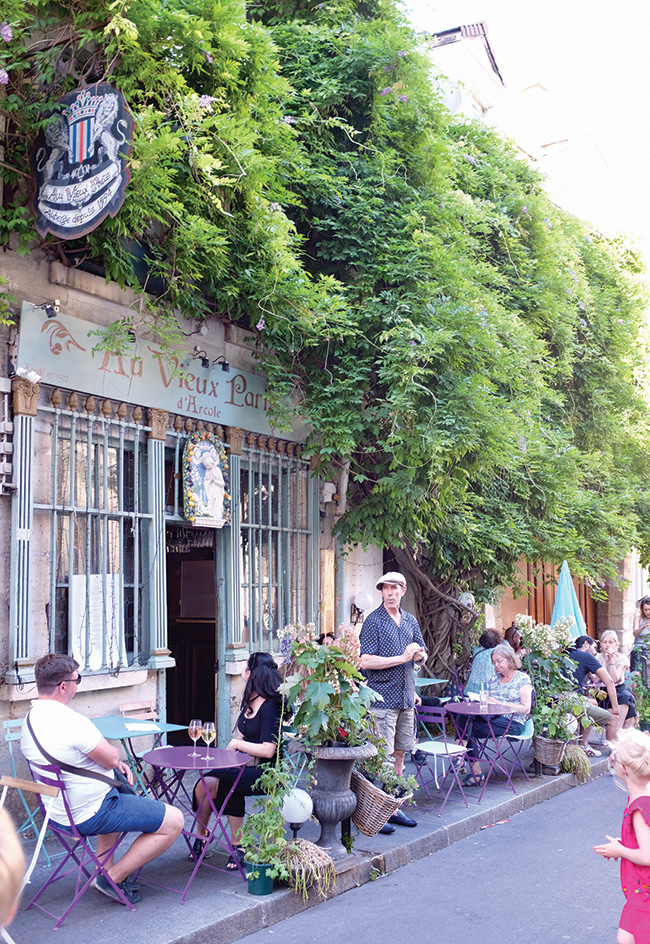
Restaurant Au Vieux Paris d’Arcole is famed for its wisteria © JT Iverson
Most people standing in the middle of the Parvis de Notre-Dame, the vast square in front of Paris’s emblematic 850-year-old cathedral, will naturally be looking up. But those who happen to gaze downwards may notice a strange brass star embedded in the stones, and the words, “Point zéro des routes de France”. For mapmakers, this is where France begins – the point from which distances are calculated between Paris and every part of France. As Lorànt Deutsch recounts in his invasions which began in around 276 AD. From that point onwards, and well into the Middle Ages, most lodgings and businesses of Paris were concentrated on and around Île de la Cité. Rue Chanoinesse was named after the chanoines (canons) of Notre-Dame, who historically lived on this part of the island. The beautiful restaurant at no. 24, Au Vieux Paris d’Arcole, whose wisteria-covered façade is an Instagram sensation every spring, was originally a canon’s home, built in 1512.
Legendary Residents
In the 12th century, the famous canon Fulbert made his home between Rue des Chantres and Quai des Fleurs. There at no. 9 a plaque honours the star-crossed lovers whose union Fulbert thwarted – his niece Héloise and the theologian Abélard, whose illicit affair, which began under Fulbert’s roof, ranks among history’s most famous tales of forbidden love. Another romance of sorts is commemorated nearby on Rue de la Colombe (Dove Street), whose cobblestones and teetering buildings make it one of Paris’s most atmospheric walkways.
At no. 4, a sculpture of two doves evokes the legend for which the street is named. In around 1225, a crumbling one-storey house inhabited by a sculptor and a couple of tamed doves collapsed here, trapping the birds under the stones. When the male dove managed to escape, he began returning daily to feed his mate. That loyalty inspired the neighbourhood to help sort through the rubble, finally freeing the female dove. A few steps away, what resembles a cross-walk traced across the cobblestones before no. 6 is in fact the outline of the Roman wall discovered here in the 19th century.
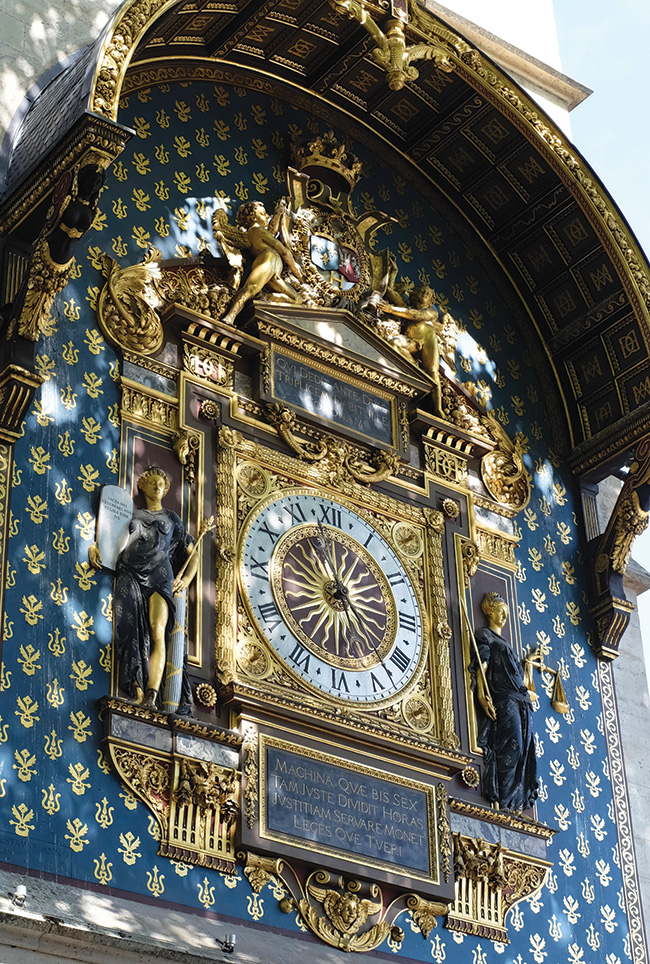
La Tour de l’Horloge © JT Iverson
On Île de la Cité, it seems a monument from another era awaits around every corner, from the Conciergerie’s Tour de l’Horloge, where a clock has been ticking since engaging history of Paris, Metronome, it also marks the place where the Paris was born. Just metres from here, underneath Notre-Dame, workers in 1711 made a remarkable discovery: the stones of an ancient pillar had been integrated into the very masonry of the cathedral. The blocks were sculpted with images of Gallic divinities and Roman gods and inscribed with the words, “To Tiberius Caesar Augustus [Emperor from 14 to 37 AD], both so good and so great, the mariners of Parisii, with funds from their community treasury, have erected this monument”. So it was, writes Deutsch, that just decades after the Romans had conquered the Parisii and founded Lutèce, “the Gallo-Roman civilisation was set in stone”.
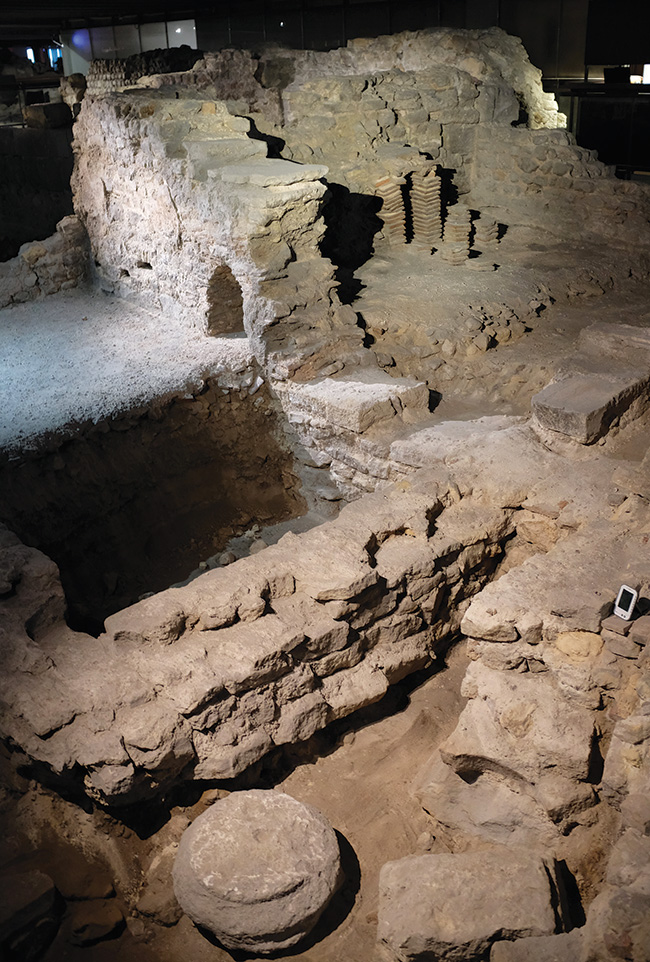
The archaeological crypt of Notre-Dame Cathedral © JT Iverson
Nearby, a flight of stairs leading underground offers the chance to visit the vestiges of that civilisation. The archaeological crypt of Notre-Dame provides a fascinating overview of the history of Île de la Cité, presented around the sprawling remains of an entire 4th-century neighbourhood. Discovered in 1963, the dwellings, bathhouses, and former stone quays date back to the era when Lutetia was a port city bustling with merchant ships. Yet the outlines of Gallo-Roman Paris can also be seen above ground. As Lorànt Deutsch notes, from the beginning Île de la Cité was “oriented around the symbols of terrestrial authority and heavenly power”.
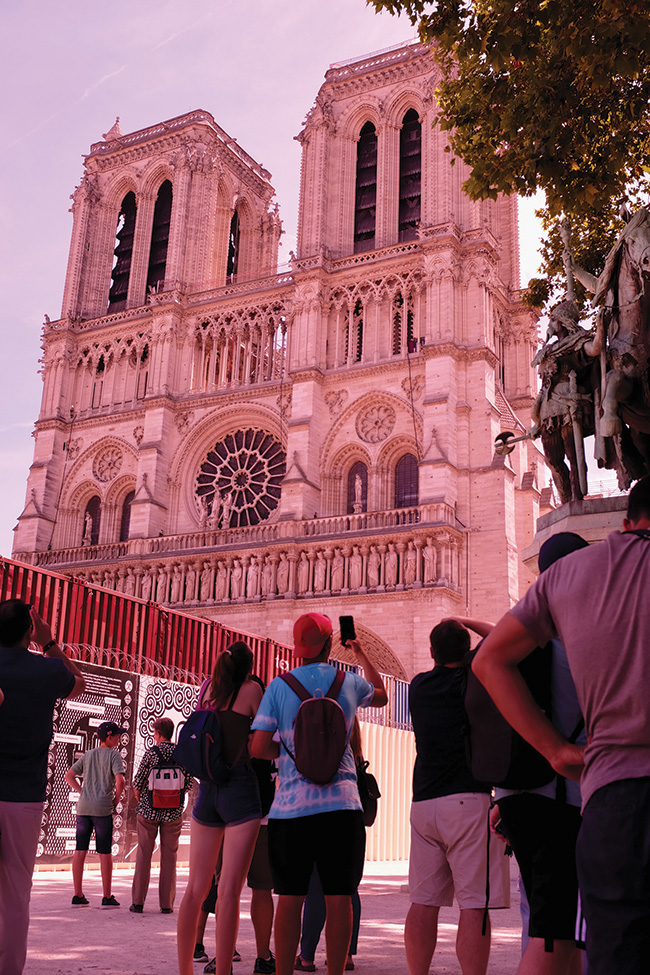
Notre-Dame continues to attract visitors from around the world during its restoration © JT Iverson
On the western half of the island, the Romans built a fortified palace from which to rule their province. This is also where Clovis, King of the Franks, established his residence in the 6th century, which in turn became the seat of power for the Capetians and for all French Kings until the late 14th century, when Charles V transformed the palace into the Conciergerie we know today, seat of French judicial power. On the eastern half of the island, the only structure present at the founding of Lutetia was a temple to the Gallic gods. Naturally, this same sacred site was used for the first Gallo-Roman temples, then for the first Christian chapels, and finally in 1163, for the cathedral of Notre-Dame.

Marché aux fleurs © Paris Tourist Office Daniel Thierry
Today, this mille-feuille of history is something we can appreciate not just while visiting the island’s great monuments, but while exploring its walkways. Take the rectangle of streets just north of Notre-Dame – Rue de la Colombe, Rue des Ursins, Rue des Chantres and Rue Chanoinesse. In the 19th century, under these streets were discovered the vestiges of the ancient Gallo-Roman wall built to protect Lutetia from the barbarian 1370, to the flower and bird market on Place Louis Lépine, inaugurated in 1809, to the Mémorial des Martyrs de la Déportation, a moving Modernist monument created in memory of all the French people deported to Nazi camps during the Second World War. But the island is also full of living history in the form of historic boutiques and ateliers, notably at the western end of the island around the square known as Place Dauphine.

The charming Place Dauphine © JT Iverson
Created in 1607, Place Dauphine was part of a series of urban renewal projects undertaken by Henry IV in the aftermath of the Wars of Religion. After giving Paris a much needed Pont Neuf, or ‘new bridge’, traversing the western tip of Île de la Cité, Henry IV would transform the former gardens of the Palais de la Cité into a bustling triangular commercial square, with rows of shops and houses with matching façades. If Place des Vosges, created at the same time, was the square of aristocrats, Place Dauphine would be the square of common Parisian artisans and merchants, whose shops were built overlooking both the square and the quays of the Seine. Soon, the Quai de l’Horloge (quay of the clock) and Quai des Orfèvres (quay of the silversmiths) were lined with craftsmen such as the watchmaker Abraham-Louis Breguet, creator of timepieces for Marie Antoinette and Napoleon.
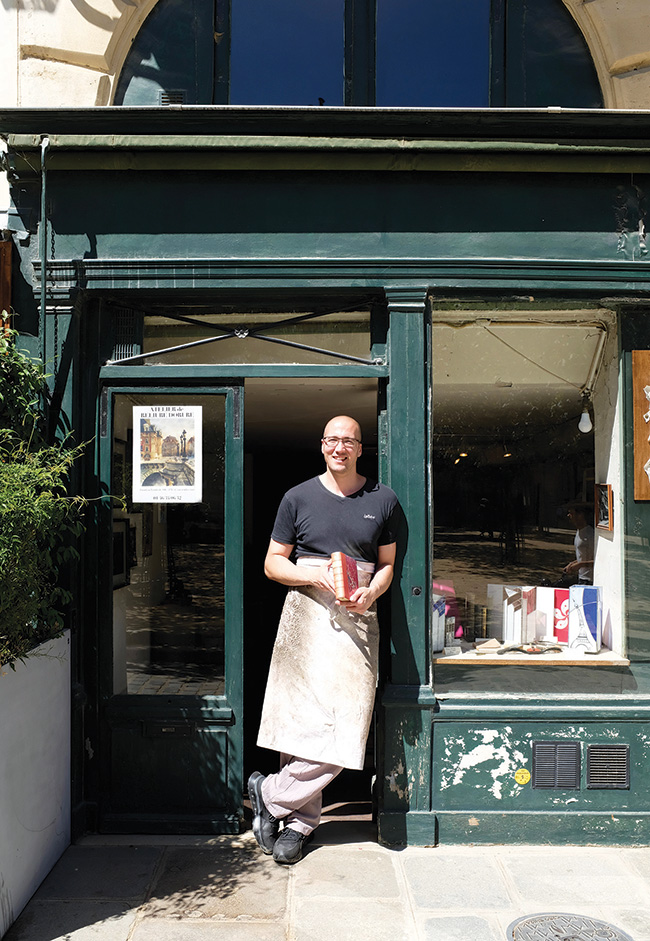
L’Atelier de Reliure de La Place Dauphine © JT Iverson
Bastion of Craftsmanship
Today, Place Dauphine, described by actress Simone Signoret, who lived there with her husband Yves Montand, as “the most peaceful of provincial squares”, is an oasis for pétanque players and lovers of al fresco dining. But it also remains a bastion of French craftsmanship.
At Arcy Créations (37 quai de l’Horloge), Françoise Ballé sells beautiful, hand-painted French porcelain plates and decorative objects. At Jeanne Danjou & Rousselet (15 place du Pont-Neuf), maker of costume jewellery for film stars and fashion houses from the 1920s to the 1970s, Jean-Claude Rousselet now transforms his family’s historic stock of Art Deco beads and filigree into charming new creations.
At the wine bar Napa (18 place Dauphine), owner Cédric Lecroc and sommelier Lucas Moissonnier have curated a collection of both New World wines and exquisitely crafted cuvées from a new generation of French winemakers. Nearby, the paper and printing shop Papeteries Gaubert (28 place Dauphine), founded in 1830 and loved by generations of lawyers and writers for its hand-printed business cards and stationery, still sells paper by the kilogramme.
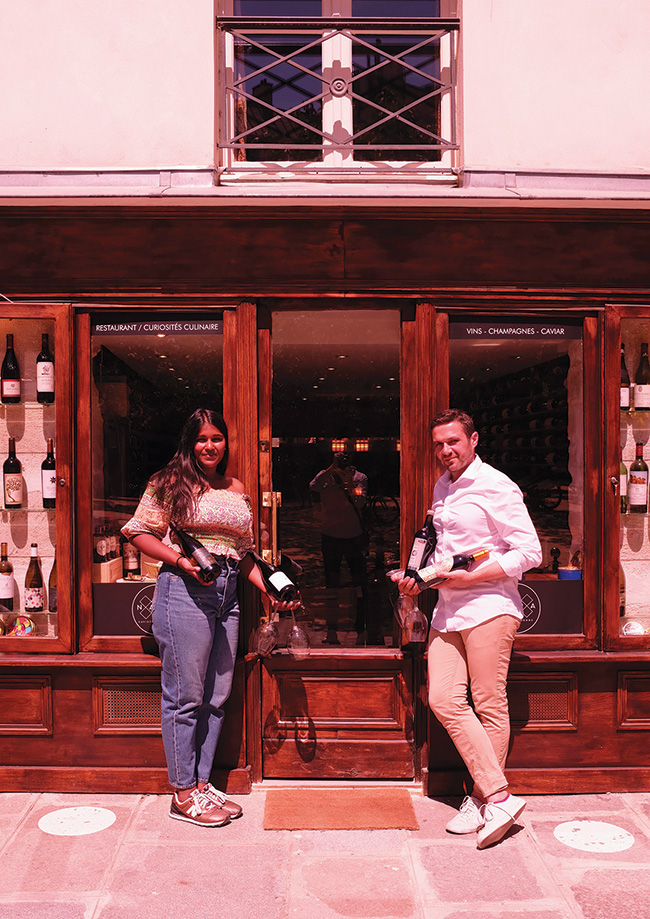
Napa © JT Iverson
Dreams for the Future
Gaubert’s motto is “de la tradition à la modernité” – from tradition to modernity. Dominique Canale of Médailles Canale (37 quai de l’Horloge) can appreciate those words. He remembers the day his father announced their family’s medal engraving workshop, founded in 1827, would close when he retired. “I asked myself why this profession should disappear after all these centuries, while other traditions are passed on to new generations. And so I decided I would try to save all this.”
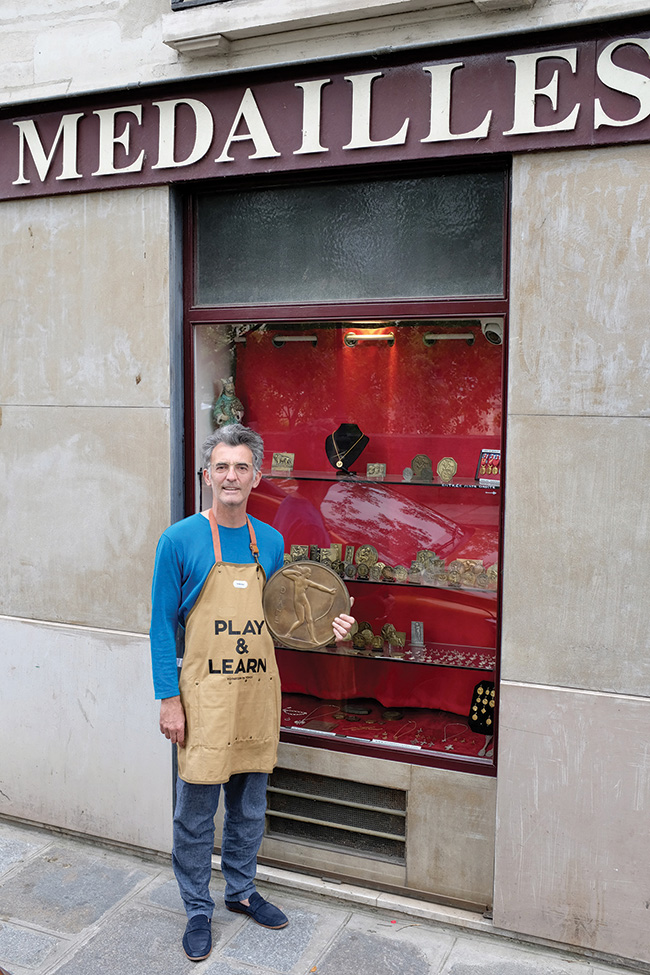
Medailles Canale © JT Iverson
Today, the demand for personalised, bespoke jewellery has Canale’s 19th-century hydraulic press stamping out beautiful pendants for a new generation. Now Dominique just hopes that when the time comes he can find an apprentice to pass the business on to. It’s a tricky transition that Gregory Gobillot, owner of a vibrant bookbinding shop situated at 16 place Dauphine since 1876, also prays he can manage one day. “For many people today, scrolling online has replaced turning pages,” he says. “Of course we must adapt and live with the times, but we can’t forget our patrimoine – we need to preserve things that will have real meaning for future generations. So I’ll do everything I can to ensure that this little piece of French culture endures.”
To see the great stack of weathered tomes clients have left for Gobillot to restore, and to see the life and vitality of this square at the heart of Paris, one can’t help but feel hopeful.
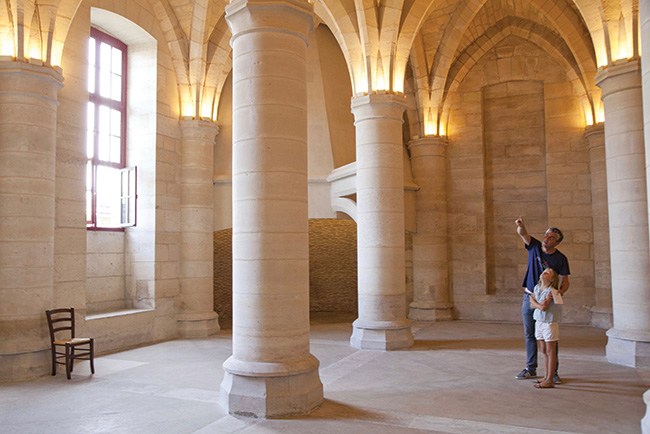
Conciergerie © Nicky Bouwmeester
On Île de la Cité, it seems a monument from another era awaits around every corner, from the Conciergerie’s Tour de l’Horloge, where a clock has been ticking since engaging history of Paris, Metronome, it also marks the place where the Paris was born. Just metres from here, underneath Notre-Dame, workers in 1711 made a remarkable discovery: the stones of an ancient pillar had been integrated into the very masonry of the cathedral. The blocks were sculpted with images of Gallic divinities and Roman gods and inscribed with the words, “To Tiberius Caesar Augustus [Emperor from 14 to 37 AD], both so good and so great, the mariners of Parisii, with funds from their community treasury, have erected this monument”. So it was, writes Deutsch, that just decades after the Romans had conquered the Parisii and founded Lutèce, “the Gallo-Roman civilisation was set in stone”.
For as the writer André Breton reminds us in his novel Nadja, describing the triangle of Place Dauphine as the womb of Paris, Île de la Cité is a place of rebirth. When we visit the Conciergerie’s Salle des Gens d’Armes, we are not only walking on stones laid in 1302 by Philip the Fair, but visiting a site built and rebuilt by the rulers of France over more than a millennium.
And when we see Notre-Dame today in the midst of its restoration following the fire of 2019, rising again from the ashes, we can’t help but imagine all the places of worship that rose and fell on this sacred ground before it, back to the first temple of the Parisii. It’s a vision of hope for this city we love, a city which never ceases to reinvent itself.

Papeteries Gaubert © JT Iverson
Businesses around Île de la Cité
PAPETERIES GAUBERT
28 place Dauphine
Tel. +33 1 42 33 35 86
Founded in 1830, Gaubert is one of the most venerable paper and printing shops in Paris. Beloved by generations of lawyers and authors like Colette (who would write on nothing but Gaubert’s sky blue paper), ink lovers come here for handcrafted pens, leather desk covers and document cases, and for exquisite business cards, wedding invitations and stationery printed by hand on Gaubert’s presses.
L’ATELIER DE RELIURE DE LA PLACE DAUPHINE
16 place Dauphine
Tel. +33 1 46 34 06 32
Since 1876, bibliophiles have been bringing their time-worn tomes to this small bookbinding shop overlooking the Place Dauphine. Today, owner Gregory Gobillot is the fifth generation to carry on the tradition, giving old books a custom slip box, a fresh coat of gilding, or lovely new covers of fine leather and precious unused stocks of 19th-century cloth and paper.
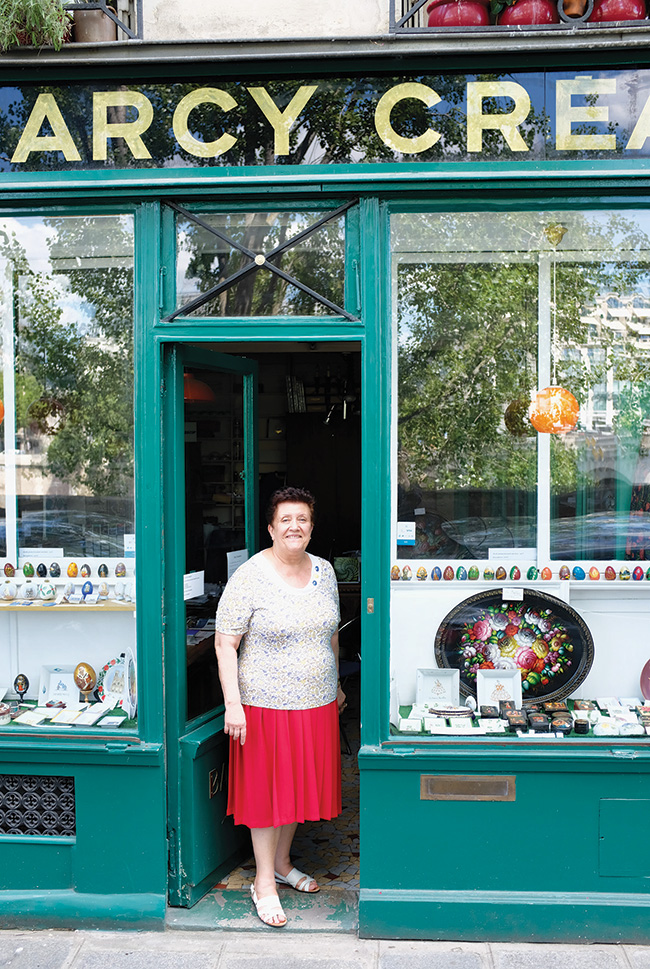
Arcy Créations © JT Iverson
ARCY CRÉATIONS
37 quai de l’Horloge
Tel. +33 1 43 54 25 47
In the boutique where her father sold fishing tackle, Île de la Cité native Françoise Ballé offers a charming collection of quality decorative objects for French heritage lovers, including porcelain plates, eggs and dishes representing scenes from Versailles, the Moulin Rouge, and the gargoyles and stained glass windows of Notre-Dame Cathedral, all designed by Ballé and painted by French artists.
NAPA
18 place Dauphine
Tel. +33 6 16 52 50 89
A Paris wine shop named after the Napa Valley? Mon dieu! Suffice to say, Napa is the most opened minded caviste in the city (its motto is caviste du monde), boasting a collection of exquisite cuvées from across the globe but also lesser known French wines (100% Petit Verdot Bordeaux, red wine from Champagne), to take home or enjoy on site with an array of delicious pairings from charcuterie to caviar.
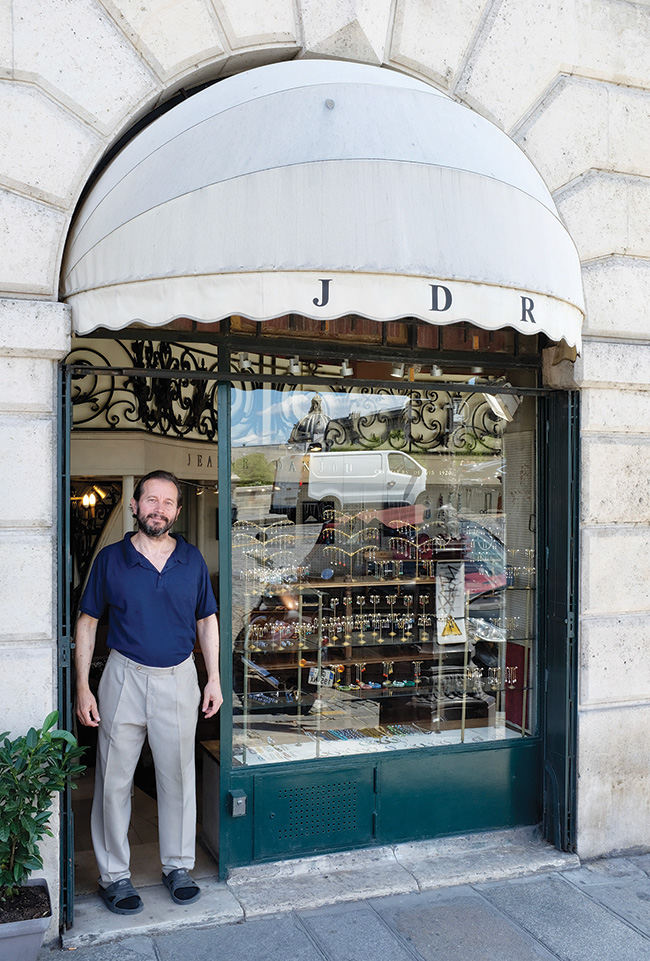
Jeanne d’Anjou © JT Iverson
JEANNE DANJOU & ROUSSELET
15 place du Pont-Neuf
Tel. +33 1 43 54 99 32
Starting in the 1920s, the founder of this Pont Neuf jewellery shop, Louis Rousselet, created costume jewellery for the greatest stars of the time, from Mistinguett to Josephine Baker. Today, Jeanne Danjou is a treasure trove for lovers of vintage jewellery, offering an abundance of new creations crafted from stocks of never-before used beads and filigree dating back to the 1930s.
MÉDAILLES CANALE
37 quai de l’Horloge
Tel. +33 1 43 54 19 58
Founded in 1827, this medal making and engraving workshop has created pendants for baptism and marriage celebrations for generations. Today, a growing demand for unique and personalised jewellery has brought a new clientele to Médailles Canale, which offers beautiful medals and pendants engraved by hand or created using historic designs and a hydraulic press dating back to the 19th century.
If you want to hear more from Jeffrey T Iverson about Paris, join us on Sunday for our next Bonjour Paris Live event when veteran Paris writer Jeffrey T Iverson takes us on a tour of one of the most characterful streets of the Left Bank, the place where Paris was reborn after WWII in an outpouring of jazz clubs, galleries, bookshops and cafés. You can watch an earlier Jeffrey Iverson Bonjour Paris Live event “Passage Jouffroy and Passage des Panoramas” for FREE on our YouTube channel.
Lead photo credit : Square du Vert- Galant on the western tip of Île de la Cité © Paris Tourist Office Marc Bertrand
Share to: Facebook Twitter LinkedIn Email
More in best places to visit in Île de la Cité, best places to visit in Paris, Île de la Cité, Paris
Leave a reply
Your email address will not be published. Required fields are marked *




REPLY